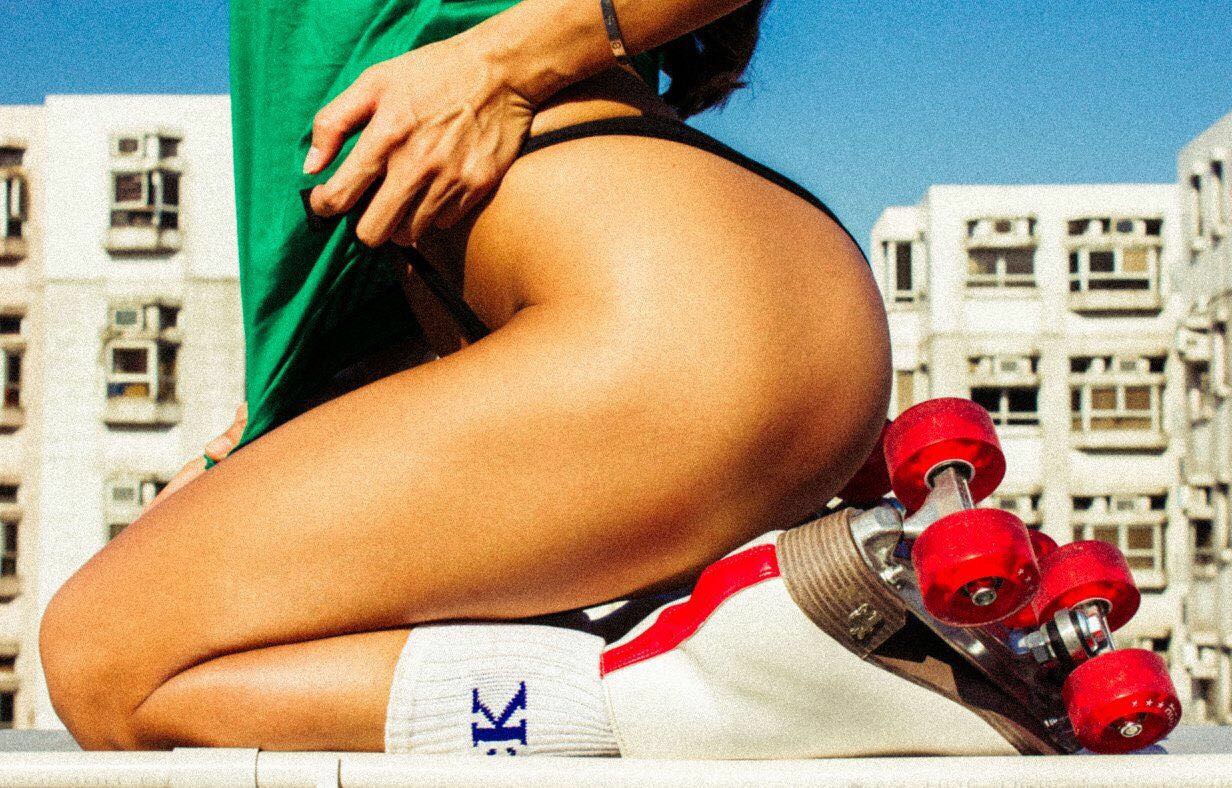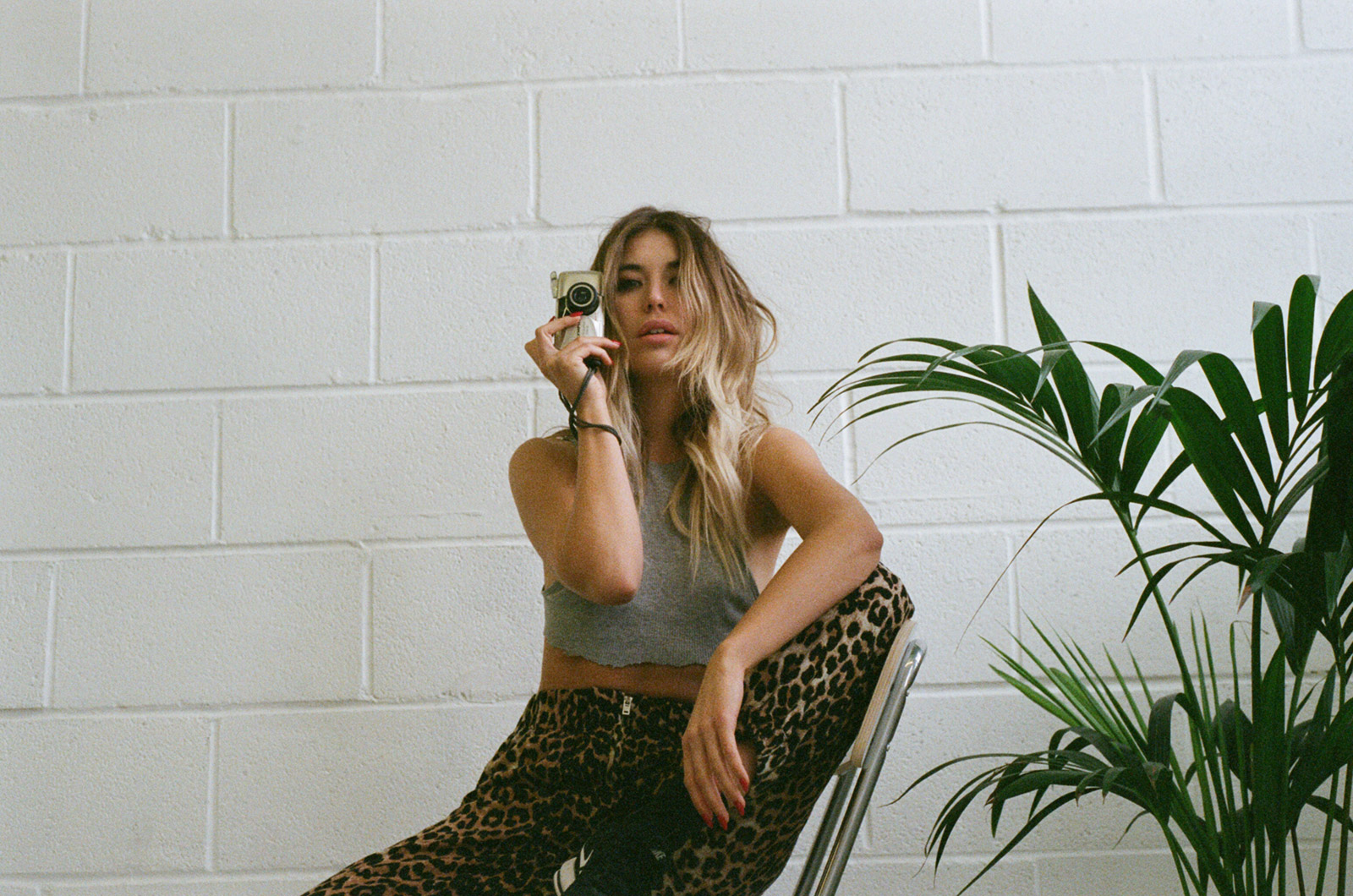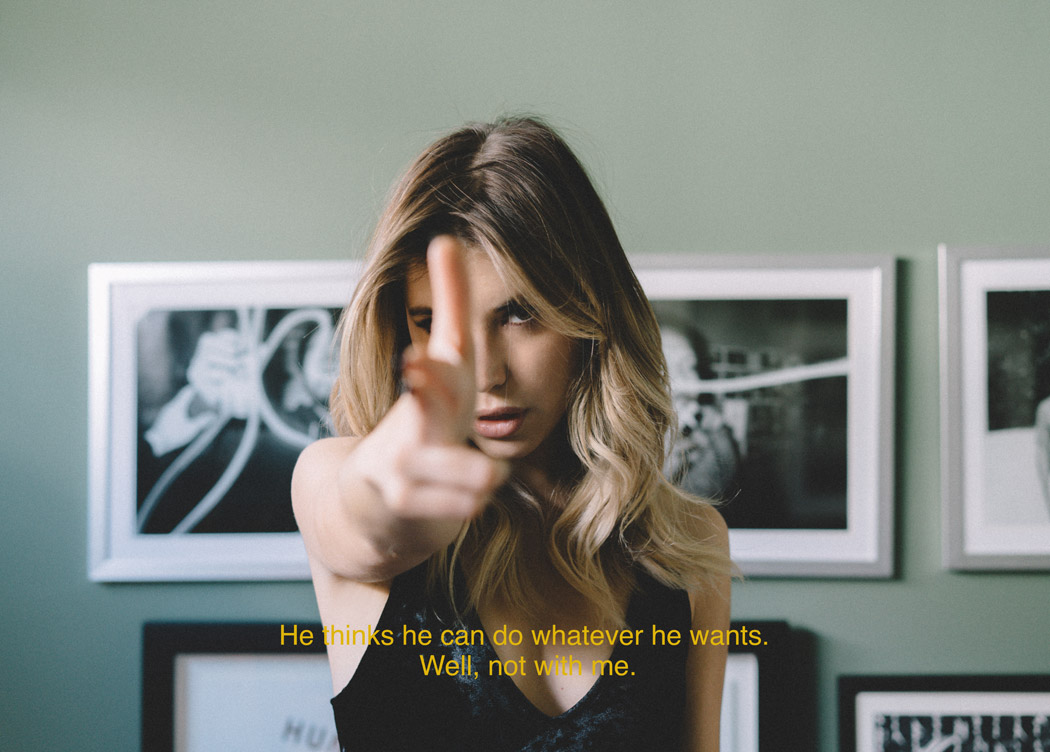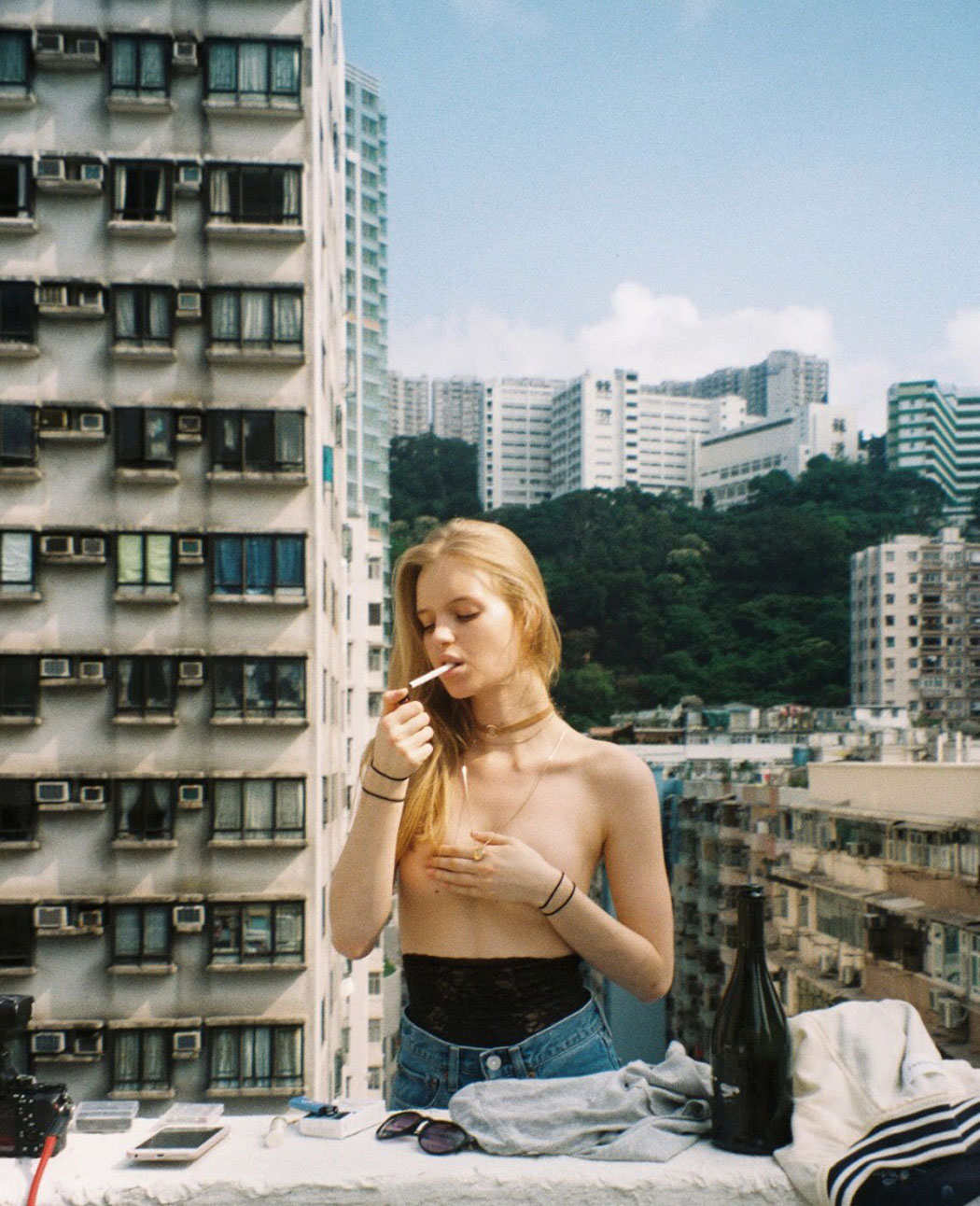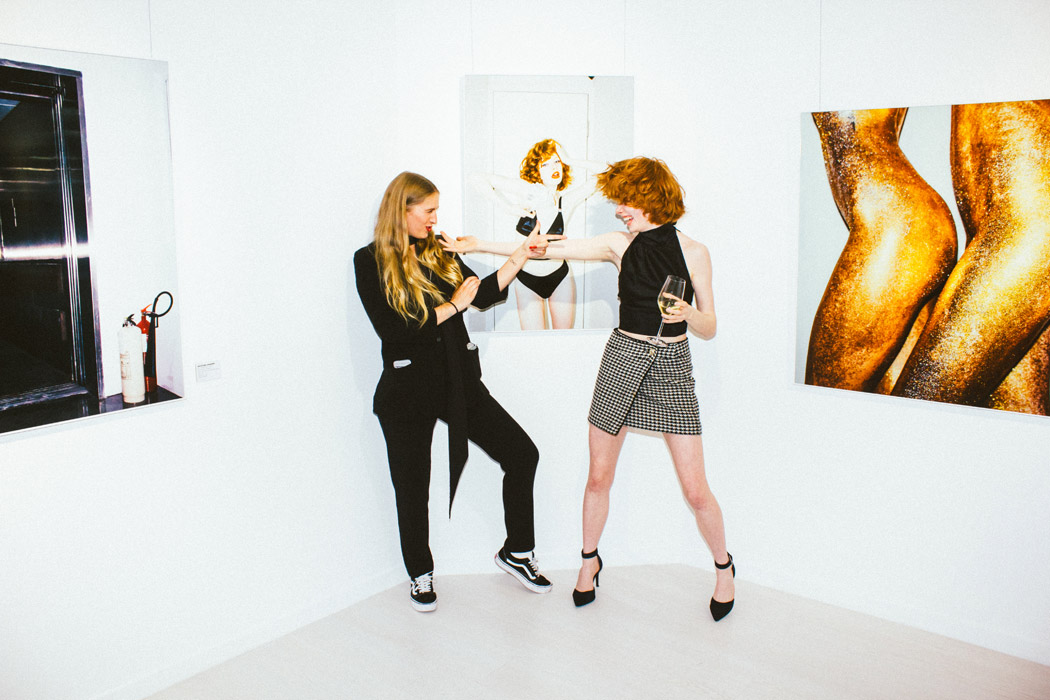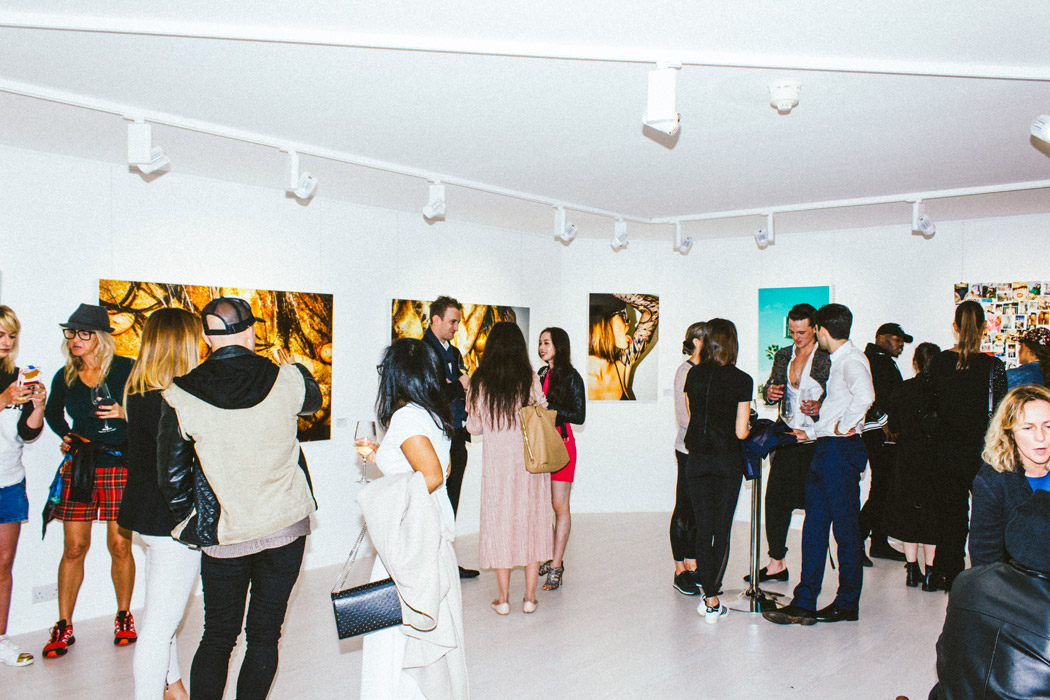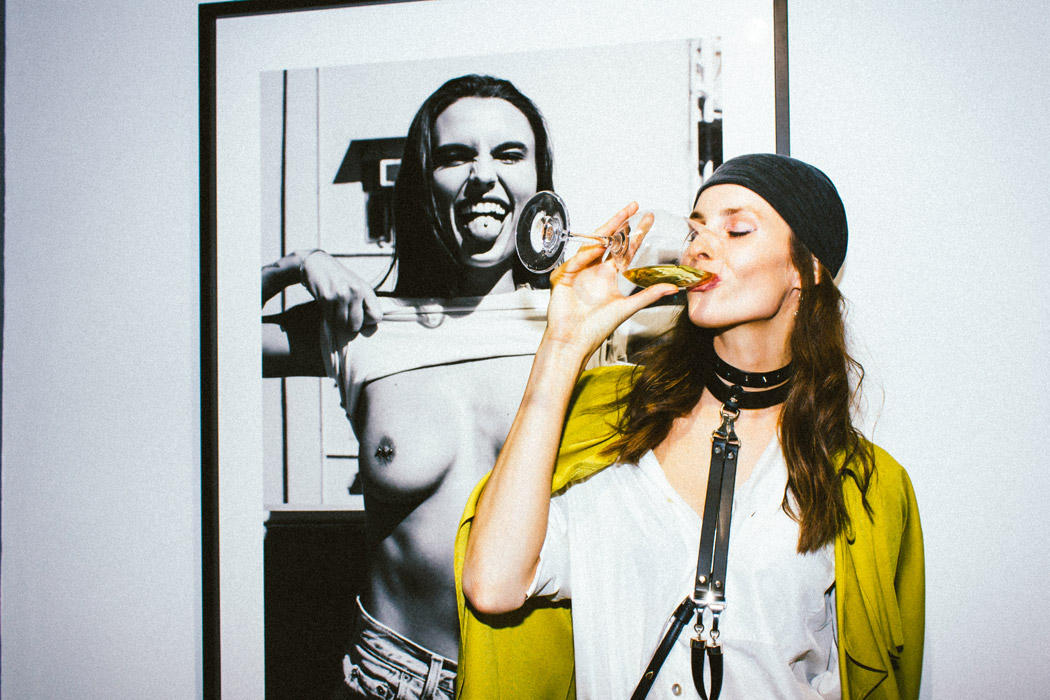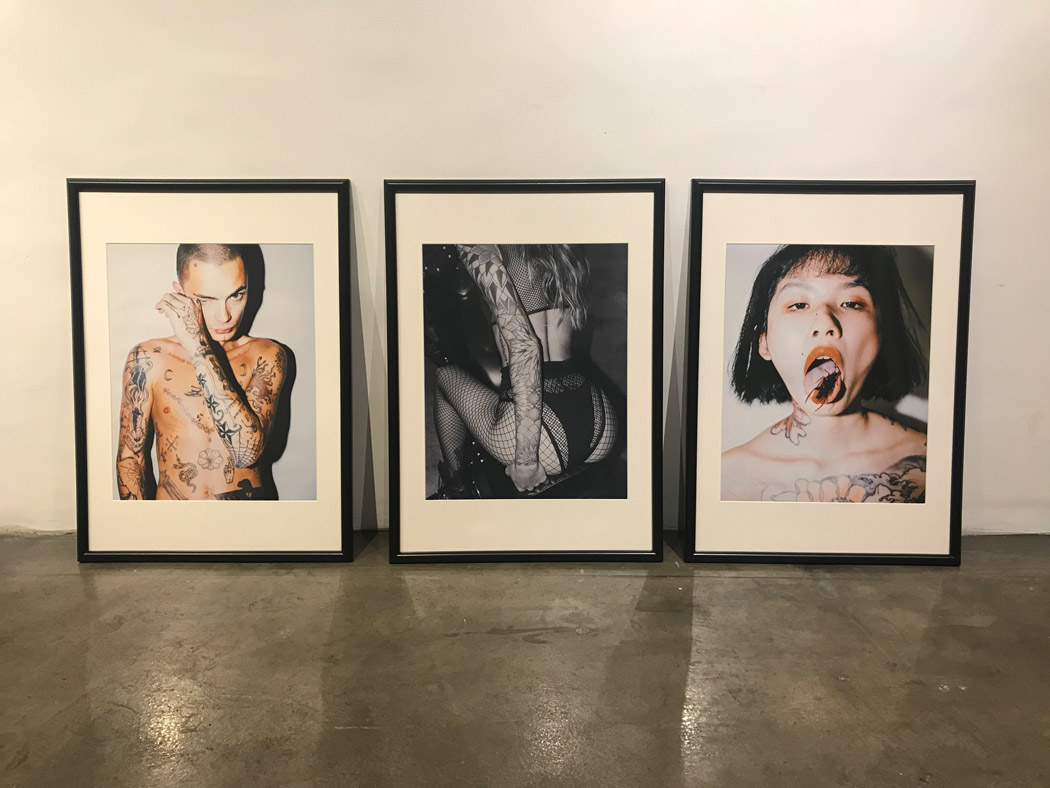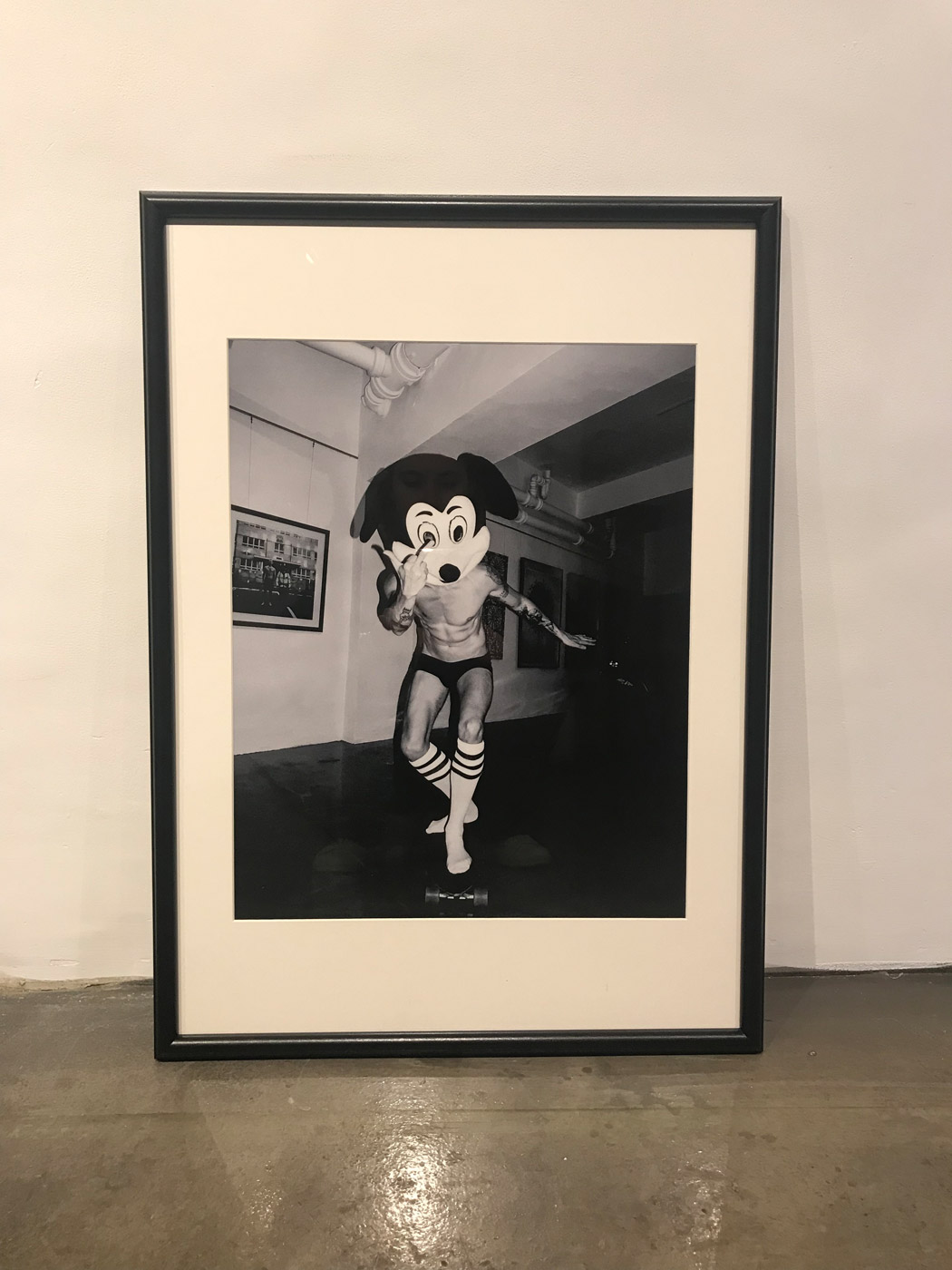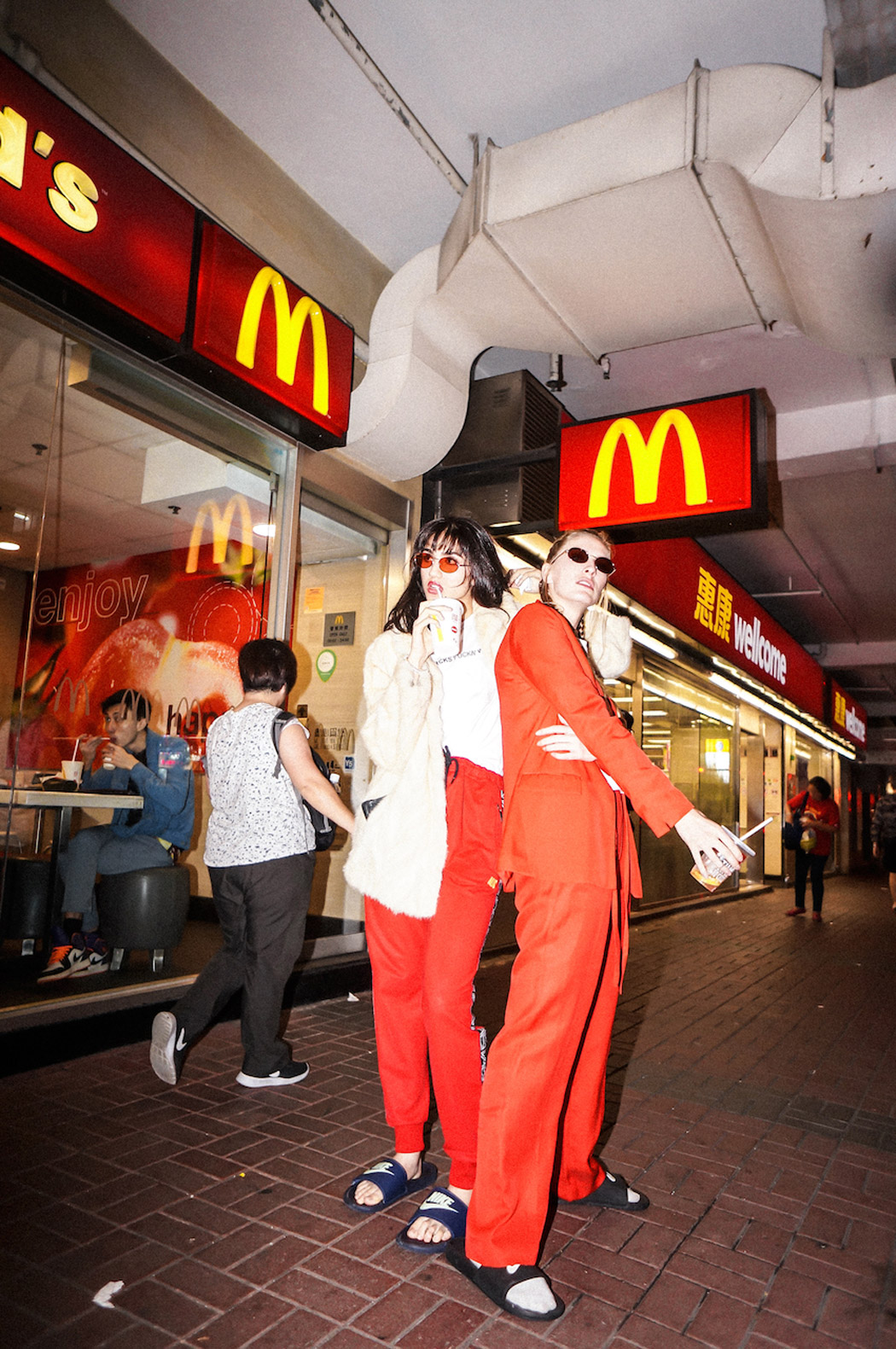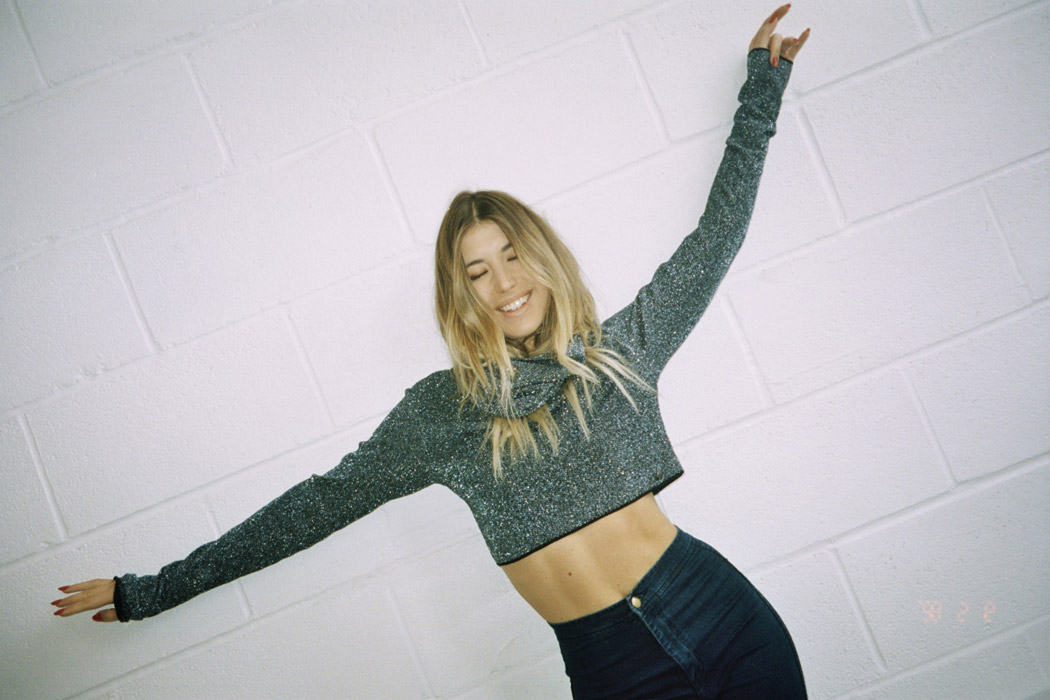“Art and love are free from “have to”s. For me anyway.”
Society needs art. It is a reflection of who we are and where we stand or it can also be a lead of direction of where we want to go as a community. Art is a witness of times, snapshots that can be thought-provoking, affecting or provide a sanctuary to get away from it all.
The young talent Tiziana des Pallieres is the new generation of art curators specializing in contemporary photography and founder of the creative agency Artizians that represents and works closely with millennial photographers such as Nicoline Aagesen or Duran Levinson. Always on the lookout for images and artists that touch and explore the possibilities for creatives to show them to the world and be an interface between artist, viewer and buyer. We wanted to find out more about her motives to choose this career path, her love for photography and art, people’s longing for the real frame outside the iPhone, and what makes a picture special in her eyes.
What moment made you fall in love with art and photography?
As for art, since I know my mind. I understood my love for photography much later. At some point, when I was around 22 years old, I noticed that most of my art collection consisted of photographs. That is the moment I realized my preference for the medium.
What inspired you to become a curator?
It was an organic process; even though my first BSBA is in business, after my studies I knew I wanted to work in the field of the post war/ contemporary arts. I’ve ended up studying arts with Christie’s and Sotheby’s education both in London and New York. During these times I had the chance to see which department of the art industry suited my skills the best. I’ve always had a good eye to work with visual arts, passion for organizing events and curiosity to explore philosophical topics hence curating came naturally.
In an interview you said: ”I am definitely making my own way as part of a new generation of curators and creators.” What are you doing differently and how would you define the new generation?
What I meant by that is that I am an independent curator hence free to have my artistic choices and to work with many different companies and artists. I personally work globally for exhibitions and other creative productions; mostly between London, Paris and Hong Kong. I use social media extensively and engage in creative collaborations all the time. The new generation of curators are more dynamic, experimental and less institutional. Less traditions are followed and more ideas being explored all the time.
Photography by Andrei Topli on film
“The new generation of curators are more dynamic, experimental and less institutional.”
In a world where millions of images are shared and uploaded every day, what makes a photograph long-lasting also maybe for the next generation?
If we observe the history of art, I think the safest conclusion is that the photograph has to be unapologetic and documentarian of its generation, avant-garde in some way or outstanding and distinctive in its style. For example, it may reflect the technological advances of the area, a shift of style, or document something historical. I find that often photographs/photographers are disregarded first and gain importance in retrospection.
Speaking of finding new work and artists, where do you go to find them? Are you doing also portfolio reviews and studio visits as well? Or you mostly search in the internet such as instagram or other social media platforms?
The first round of scouting happens by Nicoline Aagesen who mostly uses her personal connections. Nicoline is one of the Artizians artists, but she is also my right hand and partner for most things I do. Then I make the final decision out of her selection. Many artist approaches us directly too. If we like their portfolio, we add it to the profiles to review. So yes, I am doing numerous portfolio reviews and as well as some studio visits, though most of the millennial photographers don’t work out of permanent studios.
image by Victoria Lemus – artist of creative agency Artizians
“A photograph has to be unapologetic and documentarian of its generation, avant-garde in some way or outstanding and distinctive in its style.”
Who are some of your favorite established photographers, and how did they influence you they way you see photography?
Ren Hang, Araki Nobuyoshi, and Yang Fudong are some of my favorites for staged photography with erotic undertone. I also love the the colorful wonderland world of David LaChapelle and the playful imagery of Ellen von Unwerth. I’ve always had an obsession and fascination for the beauty of the human form, especially women. These artists brought new perspectives to my critical thinking as well as inspiration for productions I am directing.
What is the biggest challenge of being a curator?
The number of institutional opportunities vs the number of curators out there. That is why independent young curators initiating their own projects and collaborations more and more.
image by Sergio del Amo – artist of creative agency Artizians
“I’ve always had an obsession and fascination for the beauty of the human form, especially women.”
And what is the best aspect of it?
The infinite possibilities of ideas, projects and artists I get to explore and work with for exhibitions and other productions.
You are also organizing a lot of targeted exhibitions – it really seems that nowadays things like exhibitions as well as independent print magazines, workshops and similar things are just booming again. It shows that people really want to see photos and art „in real“ and be able to touch and feel it not only from behind a screen. So to speak, existing and genuine. Tangible and alive. Do you feel that too?
Totally. The return of old-school ways for new-school photographers and creatives are very ”in”. From pop-up exhibitions and the popularity of analog photography to independent print magazines, you name it. Looking at photographs from an iPhone screen as opposed to seeing them in large scales and in high-quality handmade frames is incomparable. The “old school” gallery model exhibitions are the peak of my work as a curator; that’s when everything unfolds I had worked months on. Needless to say collectors want to see the photographs before purchasing too.
Exhibition London “Uncensored”
“I like to organize exhibitions to be a visual journey, something to remember.”
What do you want your viewers to take away from an exhibition.
My goal usually depends on the curatorial theme, but in general I aim to make the viewers realize that they are looking at fine art and it’s something they would enjoy having in their living space; as part of their home. Most of the images I work with seem to have a narrative and so I like to organize exhibitions to be a visual journey, something to remember. The bottom line is I’d like them to say “wow, this is fire”.
What pictures are hanging on your wall at home?
My living room has two large scale photographs; one is the Grand Diary of a Photo Maniac by Nobuyoshi Araki, and over the dining table is the Batman Family by Rnacinan. I also have a Tomas Saraceno statue hanging from the ceiling. In my dressing room there is one of the The Nightman Cometh works of Yang Fudong. I also have a huge work by Ester Haase called the Meatmarket leaning against the wall. On the hallway there is a photograph by Nicoline Aagesen. In my bedroom there is a very vibrant mixed-media work by Parker Ito and another sensual image by Nicoline Agesen. The rest of my collection is currently in storage.
Exhibition Hong Kong “Millennial Vintage”
“I want to shift the invalidating perception of photography we are experiencing today- largely due to the influx of smartphones and the culture of social media.”
Is there anything that you would want to change in the photography and art scene?
I don’t think much about “if only/there should be” ideas because I prefer to accept the reality and take it from there. The change I set myself out to bring, as much as I can, is to shift the invalidating perception of photography we are experiencing today- largely due to the influx of smartphones and the culture of social media.
How much time are you spending on social media except for work?
Work already takes up so many hours a day on social media that I am trying to limit the off-duty time to 1h.
image by Nicoline Aaagesen – artist of creative agency Artizians
You grew up in Budapest. I think it is definitely one of the most beautiful cities here in Europe. The art scene got a real boost over there too. How often are you visiting your home-town and would you like to move back there one day?
I agree, it’s one the most beautiful and romantic cities in Europe. Growing up there definitely had a big influence on my artistic “eye” and sensitivity to beauty. I am there relatively often, I have one of my residences there. As of today I haven’t thought about moving back full time but I will always want to have a base in Budapest.
What´s coming next for you in terms of projects, curations?
This August there is an exhibition of the Artizians artists in Copenhagen I am curating, then just before the Photo Paris Art Fair I’ll be organizing and curating a group show in Paris. I can’t tell more quite yet about the other projects I’m working on (smiles)
image by Mherck dela Cruz – artist of creative agency Artizians
The best life lesson so far…
Anything that costs my inner-peace is too expensive.
Art has to…
Art and love are free from “have to”s. For me anyway.
A question we should have asked you? And your answer to it?
What do I consider the highest form of art? Self mastery; to make our lives a work of art, a masterpiece.
www.instagram.com/artizians
www.artiziansmagazine.com
Photo by Andrei Topli on film

